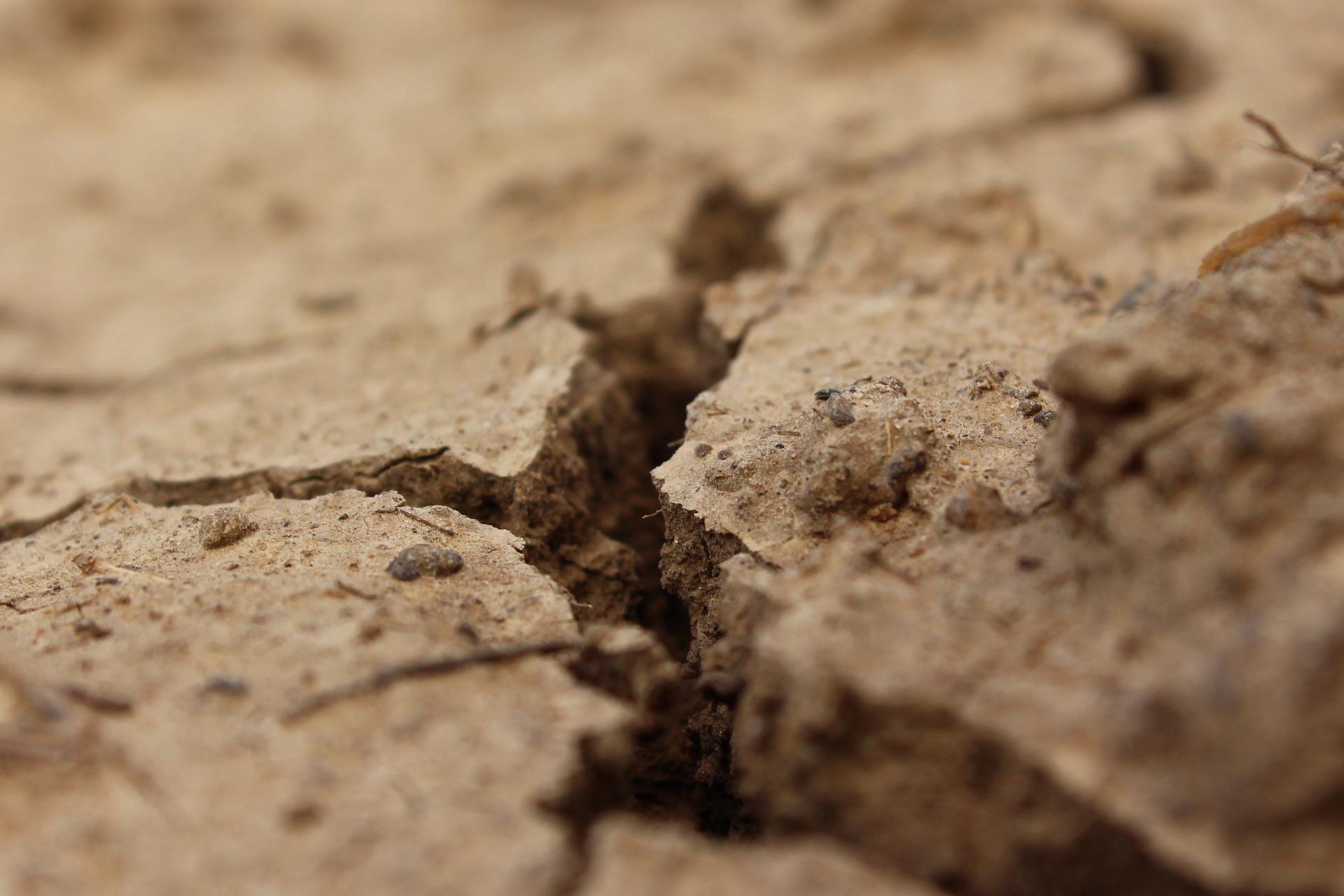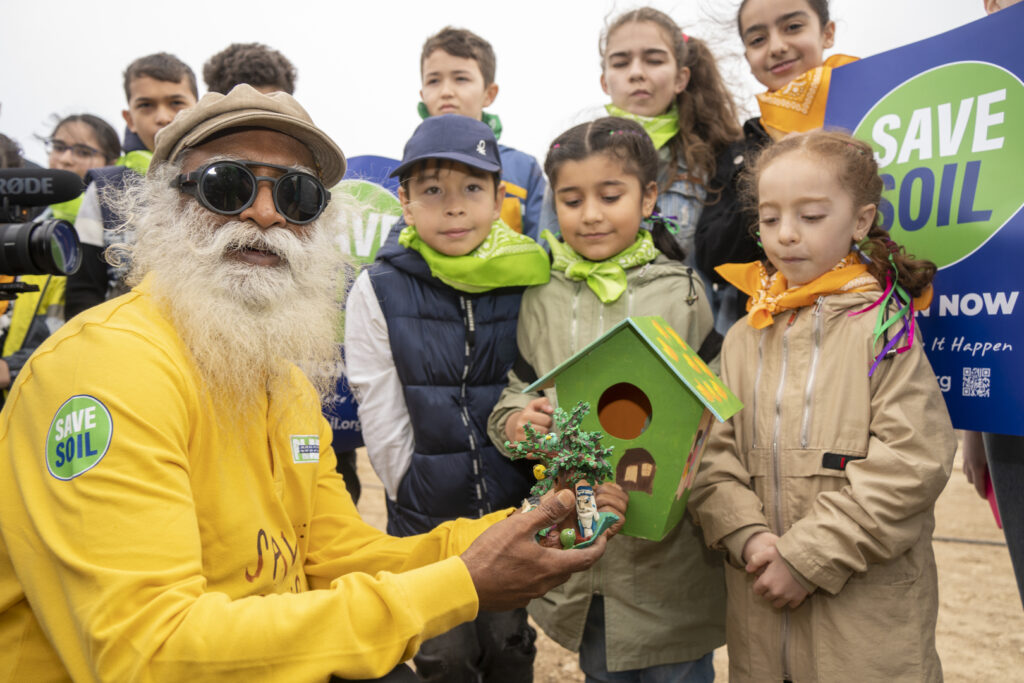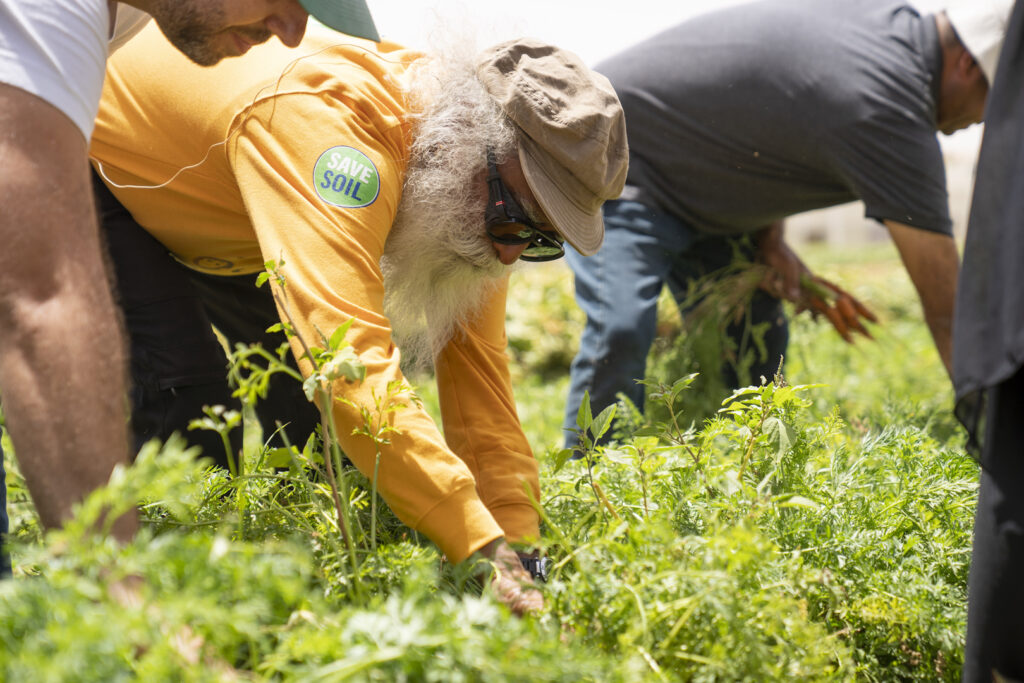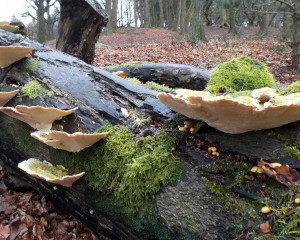
Save the Soil
By Sadhguru
Sign up for our monthly newsletter!
Jagadish “Jaggi” Vasudev, better known as Sadhguru, is a mystic and soil health advocate who spoke at The World Economic Forum (WEF) 2022 about the state of our dying soil and what policy makers and the global population can do to turn this soil crisis around. In this excerpt from his address, he discusses the goal of turning the world’s attention to our soil, inspiring 4 billion people (sixty percent of the world’s electorate of 5.26 billion) to support policy redirections to safeguard, nurture, and sustain soil. He proposes driving national policy changes in 193 nations toward raising and maintaining the organic content of soils to a minimum of three to six percent.

The soil is a living organism. We need to grasp the problem’s simplicity. This is exactly what has happened to our soil. It’s the largest living system, not just on this planet, but also in the known universe. Every handful of soil could have eight to ten billion organisms. And there are zillions of organisms and millions of species. Topsoil scientists in the world admit they know only less than one percent of the species present in the soil. All we know is that it’s alive. It’s been a shocking realization for me in the last two years to find out that eighty-five percent of our world’s nations address soil as an inert substance that can be fixed by adding or removing a chemical.
When chemical fertilizers came in, we saw this as a magic powder. Suddenly, it started doing miracles for us. In India, there were cases where our yields went up by three hundred percent. So naturally, everybody was enamored with it, thinking this was the way of doing agriculture, and gradually all plant life was removed. When the machines came, animal life was removed. The only two sources of organic content on the planet are plant life and animal life. If plant life and animal life are taken out of the farm, there is no hope of organic content being present since the notion of a farm today is swaths of land plowed and prepared by machines.
What is the purpose of organic content? Organic content is the food for the organisms in the soil. Right now, 27,000 species of organisms are going extinct per year according to the United Nations Food and Agriculture Organization (UNFAO). You heard it right, 27,000 species! At this rate, in twenty-five to forty years, we will reach a place where even if we wanted to regenerate the soil, we will not be able to. So right now, this is our generation’s big challenge, and at the same time it’s a great privilege, that we could be that generation to prevent this extinction, if we act now. We could be that generation that turned back from the brink of a disaster. Or we could be the generation that slept through the calamity and then lamented it later. Once you walk into this disaster, walking out of it is not going to happen in one generation, it may take many, many generations, and human bodies to enrich the soil. This will be the only way.
I am not a doomsday speaker. I’m a very positive, optimistic person. But every scientific fact is pointing towards this. If we act now, within the next ten to fifteen years, we can turn this around effectively. This is not rocket science. The lack of focus and firm action is the reason why these things aren’t occurring, and intricate talks, scientific arguments, and intellectual conversations continue indefinitely. We must understand when it comes to implementation, scientists and academics are not going to do it, it’s a farmer who’s going to do it. So, it has to be a simple, one-point formula to turn it around. The most important thing is to separate soil from other issues.
However, I’ve looked at the European Common Agricultural Policy, and with the way it is now, change is never going to happen. It’s well-intentioned, but when things are this complex, you will spend another twenty years debating it until it gets out of control. The Montreal Protocol of 1983, which was about ozone holes, is the only convention that has effectively met its protocol among all the treaties. All other official actions are too complex. When there are policies that go against established businesses, it’s never going to work. Nobody built a fertilizer or pesticide industry overnight. They took decades to build it, and it will take decades to slow them down. You can never do that overnight.
Now, every policy proposal calls for a fifty percent reduction in fertilizer consumption. It’s never going to happen. Because if you take away all the pesticide and fertilizer right now, our food production will decrease by twenty-five percent. That would unfold the worst disaster. It is the metropolitan populace that is fancifully discussing organic agriculture. They have never farmed. They don’t know what organic is, all they want is the label. If it is labeled organic, they will buy and eat whatever that is. So, it is very important that we segregate this right now. It is agreed by all scientific communities, a minimum of three percent organic content is essential to keep the organisms fed in the soil.
So, this is what we need to strive for: an incentive-based strategy in which you get the land to 3 percent organic content. This is now a global need. Not a single nation has three percent average organic content in their soil. The highest in the world is in Northern Europe, which is 1.48 percent. Southern Europe is at 1.1 percent, United States is at 1.25-1.3 percent, Africa is at 0.3 percent, and India at 0.68 percent. We are on the verge of a disaster. If we go on like this, we will collapse.
In my journey over the last thirty years, I’ve been talking about this. Everybody says, ‘Sadhguru, this is great, this is fantastic.” And they go to sleep on it. Because I don’t hold office and I’m not a minister of any kind, I thought the only way I can get people to wake up is to put my life on the line. So, at sixty-five years of age, I’m riding a motorcycle 30,000 kilometers and it is not a joy ride, for sure. We’ve been through snows, we’ve been through rain, we’ve been through extreme winds and above all, sweltering desert, literally throwing me off the road. But here we are. We just have one more nation in Arabia to go to, and then we are in India. Of course, we’re entering India at the peak of monsoon season. So, we’re going to be soaked to the bone. I think it will really cool me down after fifteen days of desert exposure.
Putting that aside, the important thing is this: Seventy-four nations have signed up to the Save Soil policy right now. And at the UN Convention on Biodiversity, COP15, we’ve made soil the main topic. The idea is to persuade 3.5 to 4 billion people. Why? Because, for example, the chief minister here of Karnataka is a very dynamic leader in the state. But what is the mandate we have proposed to him? Five years. Tell me, should he focus on doing things that will produce results in five years? Or should he focus on things which will take fifteen to twenty years to bear results? What can a democratically elected leader do? Normally, they will try to work within their term. Unless the people and citizens give them a mandate, not by a vote, but at the very least by voice, that if they make long-term policy decisions, we will support them.

But if you look at the election history of nations and states in the world and in India, anybody who makes long term policies will certainly lose the election the next time around. You must give this assurance that if you take long term interests in our state, country, and children, and if you make policies for the well-being of the nation, we are with you. Right now, fortunately, the social media matrix says that we have persuaded about 2.1 billion people, but we need another two billion.
Karnataka is now the only state that has implemented a four-year subsidy for every tree planted by a farmer. That has been the basis for Cauvery Calling’s success: each farmer receives 125 rupees over four years, but whether a farmer plants 10,000 trees or a thousand trees, he may also cultivate them afterwards, resulting in tremendous revenue. Every twelve years, a farmer can make the same amount as if he sold the land. He can sell or keep the land.
See, the industrial pollutants have been measured, and what is the damage they cause? What is the benefit you can have by preventing or reducing pollutants? In contrast, the damage that exposed soils cause has not been measured, because it’s not coming out of a chimney, it is coming out of millions of hectares of land. So, you cannot effectively measure it.
If you ask me, more than forty percent of global warming is due to exposed soils. If you don’t understand what I’m saying, go out, not in Switzerland, but in India or Arabia, stand out there in the sun for one hour, go under a tree, and you will understand what climate change really is. It will be four to six degrees in difference right there. So, soil needs shade, moisture, and organic content. Without organisms, soil cannot live. The first fifteen to eighteen inches of soil is the very foundation of our existence. When I say the foundation of existence, let’s not just think about food, because soil is not a resource. Soil is the source of our existence. So, if you look back as to how we have evolved, the evolution of complex life on this planet is only because of the soil microbiome. Even today, sixty percent of our body is microbial life. Only forty percent is our parents’ genetics. Scientists say that approximately a billion years ago, the phenomenon of photosynthesis started for the first time. Before photosynthesis started, the oxygen content in the atmosphere was a shade over one percent. Today, it is twenty-one percent. You and I are alive today because of this, and not only alive today, but we have also evolved into complexity, only because of this reality. But in the last thousand years, we have removed eighty-five percent of the photosynthesis from the planet. Fifty-four percent of the land is seriously plowed and farmed. Eighteen to twenty percent is partially farmed, seventy-one percent is plowed, and 4.2 percent is paved urban land. The result is, seventy-six percent of the land has no photosynthesis occurring most of the time. If we don’t fix this, we’re going to have serious regrets. This was clearly understood fifty years ago, every farmer knew you should not leave your land open to the elements. When there is nothing happening, you must add cover crops. Every piece of farmland had some plant coverage. Now, everything is removed. Look at agricultural lands. If you fly in India, from Delhi to Bangalore, except in the Western Ghats and the northeastern states, everything looks like a brown desert because there is no patch of green anywhere, there is simply brown desert.
When you plow today with machines, you’re plowing twelve to fourteen inches deep and leaving it open for months. This is murder of the soil. Literally, murder of the soil. If you don’t get the organic activity back into the soil, you’re taking away, or stealing, the foundations of future life.
The UNFAO says that the food that you’re eating today, your lunch, is actually food that belongs to an unborn child. Not even to the children who are here. To the unborn children. An unborn child is a term we use to describe the most defenseless life. Are we those types of people that will eat up the food of the unborn child and just sit here? We must fix this.
And it is not rocket science, it’s not that it cannot be done. But we are facing towards the wall instead of towards the door, and if we have commitment to move in the right direction, within ten to fifteen years across the globe, we can easily get it well above three percent. Three percent is a minimum. Some farmers we have worked with have raised organic content to eight to twelve percent. And what we noticed is that the irrigation needs drop a third of what they previously were. If you’re using a hundred liters, now you can do the same thing more efficiently with thirty liters of water.
This is essential, because by 2032, it is expected that 3.5 billion people will be water stressed in the world. This will stimulate 1.2 billion people to migrate. Forced migrations bring enormous suffering. Media will report it only when a certain number of people die, but they cannot or will not report the suffering of one human being. And when people are forced to migrate and drag their families through unknown terrains where they don’t know the language, the skills to survive in that society, those who suffer the worst of it are women and young children. It is already happening at a larger scale today. Eighty million people have migrated last year, and this year it’s expected to be a hundred million. It is projected to be 1.2 billion by 2032. When a billion people move, the suffering that happens to humanity, especially to women and children, is unspeakable.
But we are blindly driving towards that. The important thing is the organic content in the soil. I’m repeating this because it is the one critical thing that needs to happen.
In a recent survey in India, it was found that sixty-two to sixty-three percent of India’s population is still in farming. When we surveyed the farmers, they expressed that they do not want their children to continue in agriculture. So, where is our food security in another twenty-five years? And why is this so? Why is it that everybody wants to move to an urban center? If the farmer does not earn as much as a doctor or an engineer or a lawyer, there will be no farmers left in another thirty years’ time. This is an undeniable fact. This means making farming lucrative is an important mission right now.
And we have a plan. Creating the plan has taken me over two and a half years with assistance from top scientists. The strategy is up to each country to determine based on their unique economy. We made 193 policy documents for every nation separately––based on its latitudinal position, soil type, economic conditions, and agricultural traditions of the given nation. Even if you have all the signs, you cannot reverse the agricultural traditions overnight, you must work with them. So, we made these proposals while taking this into account.
The simple policy starts with the fact that not a single nation has an average of three percent organic content. Let’s say I have a hundred acres of land, if I get my land to three percent organic content, the government should give an incentive for this, to get it there. So, if you make this incentive attractive enough, most farmers would go for it. Countries which have the economic capability can do it in two years’ time, it will take some money. But if you do it in six to eight years’ time, it hardly takes any money. When it is done slowly, step by step, it costs very little money. This incentive must be attractive enough in each nation according to its economics. It’s the nation’s sovereign choice on how many years they want to take to address their soil issue.
The next step is when the organic content reaches three percent, we know scientifically how much carbon it will sequester, and what the ecological advantages are. Based on that, as a rule of thumb, the government should provide automatic carbon credit, and not make farmers apply for it. In the last seven and a half years, I’ve been trying to get carbon credit benefits to my farmers. I haven’t gotten anywhere and that’s where the policy comes in. Make policy in such a way that doesn’t put the onus on the farmer. Either the government or the business or the industry take up the responsibility. And having raised the organic content to a certain level, give the farmers that benefit. There’s a second degree of motivation here.

There are a hundred different ways of getting the organic content into the soil. You don’t need to tell the farmer how. If they want advice, the government can disseminate the knowledge. But we must at the same time know there are only two sources of organic content: plant life and animal life. There is simply no other way.
I tell this story in which in the year 2060, a few scientists seek an appointment with God. They told him, “Hey, old man, you’ve done pretty well with creation, but everything that you can do, we can also do. Time you retire.” God said, “Is that so? What is it that you can do?” So, they dug up a little soil, made a vague image of a human child and did certain things and the child came alive. God said, “Oh, that’s pretty impressive. But first, get your own soil.” There is no substitute for soil, not just on this planet, but anywhere in the known universe.
See, this question of organic content comes up in discussions because we assume that we will do agriculture without fertilizer and pesticides. No. I’m not talking about that. I say to people who live in cities, please leave farming to the farmers. Farmers know how to farm. Farm economy is so fragile, if you try to mess with something, insecticide may go but suicide will come. Because I want you to know, in the last twenty-five years, half a million farmers have committed suicide across the world, not just in India. In almost every nation, the highest number of suicides are in farming communities.
Let us not tell them, “Don’t use pesticides.” If you increase the organic content, naturally the use of fertilizer will start decreasing. People have this fancy idea that farmers are simply throwing fertilizer on the soil. It costs a lot, who is going to simply throw it? There is no way to get the crop out of degraded land without using excessive fertilizer. If you do not make the soil more alive, use of fertilizer will never be phased out. If you raise organic content, it will start dropping. Suppose you want to eat only non-fertilized food, without any kind of fertilizer, or pesticide, then you must be ready. You must be willing to eat a variety of foods. In the marketplace, you have a choice. We need to use fertilizer and pesticide in a controlled or doctored way. For example, if you go to the doctor, they will tell you, “This is what is deficient in you; take this medication, and not everything in the universe.” Right now, general application is being utilized because generally, the soil is degraded. This is like trying to do anything and everything possible to keep you alive in an ICU unit, which is a terrible situation to be in. But when you’re relatively healthy and have a small problem, the doctor treats you differently. Right now, we’re treating the soil like it’s in ICU, any thing we can use, we’re putting it there, somehow to keep it producing something. But if you make it rich and alive, then you will have choices in how you use chemicals.
Another crucial point is that the current focus is solely on seed modification, which is risky. Because you’re destroying the fundamental species of life on this planet, you are ignoring the evolutionary process of how a particular species arrived there and how many millions of years of research and development it’s taken to get that species to that place. You may call it evolution, or you call it research and development. But instead of that, we must focus on evolving our fertilizers, our pesticides, our farm machinery. Also, everybody’s talking about robotics. It’s time robotics goes into agriculture. Right now, you have a big machine which just rips the soil off. Instead, all you need to do is plant a seed and use a little oxygenation. However, if you leave the robotic machines throughout the day and night, they will work without human intervention, only where needed. They don’t have to disturb the entire soil. So, if you reform the machinery, transform the pesticides to be more nature friendly, the fertilizer to be more soil friendly, this can very easily be done. The science is already there, we know what to do, it is just that industry has not caught up because the policies do not reflect that.
Industry will not invest in anything new unless there is a policy deadline. Therefore, I refer to the Montreal Protocol; That is one place where policies were made, they had to be followed, and we fixed that one problem reasonably well. We can fix the soil issue in ten to fifteen years. We can talk about real action instead of activists coming out on the street and screaming, “Close down the pesticide and fertilizer industry.” Well, they can shout as much as they want, but that’s not going to happen. You need to transform the industry, not beat it down.
See, there are many simple ways to measure the soil organic content. All you have to do is take a sample of soil and add certain solvents to it. Then, right there on the farm, it will show you the organic content in a glass flask within ten to fifteen minutes. This science is well established. We don’t have to reinvent anything, it’s all there. Don’t go on and on debating, because we’re dealing with a global situation, not a lab where we can talk about all these nuances.
We must isolate soil from all other issues, which is a critical goal. Soil is not just an economic issue, not just a nutritional issue, it’s a question of life on this planet. Today, the UN is talking about soil extinction. The word extinction was always about dinosaurs or dodos, but today, we are talking about soil extinction; and that’s not a joke. Just seventy-eight years ago, there used to be severe and terrible famines around the world. In 1942, India’s famine took the lives of 3.2 million people. Famine is the worst way to die. If somebody drops a bomb here, you and me are gone but famine means three to four months of suffering in a slow fade. But once again, we are heading towards famine. If we want to avert this disaster, we must isolate soil as a single issue and address it because there is a simple solution and we know what it is.
Jaggi Vasudev, known as Sadhguru, is the founder of Isha Foundation, a non-profit, spiritual organization, based near Coimbatore, India. His work is not only to improve people’s physical and mental well-being, it includes global initiatives for climate action and soil protection.
This article was excerpted and edited from Sadhguru’s talk and panel discussion Conscious Planet, May 23, 2022, at the World Economic forum in Davos.

As Ireland transitions from the rich, smoky scent of peat-burning to a more sustainable future, its olfactory heritage is evolving. What will become the next iconic aromatic symbol of Ireland?
Click to watch the documentary trailer.






